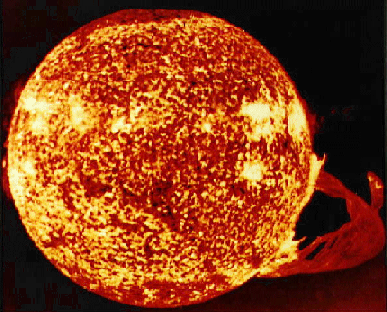Astronomy Picture of the Day
Discover the cosmos! Each day a different image or photograph of our fascinating universe is featured, along with a brief explanation written by a professional astronomer.
August 13, 1995

The Sun Flares
Credit:
NASA,
Skylab